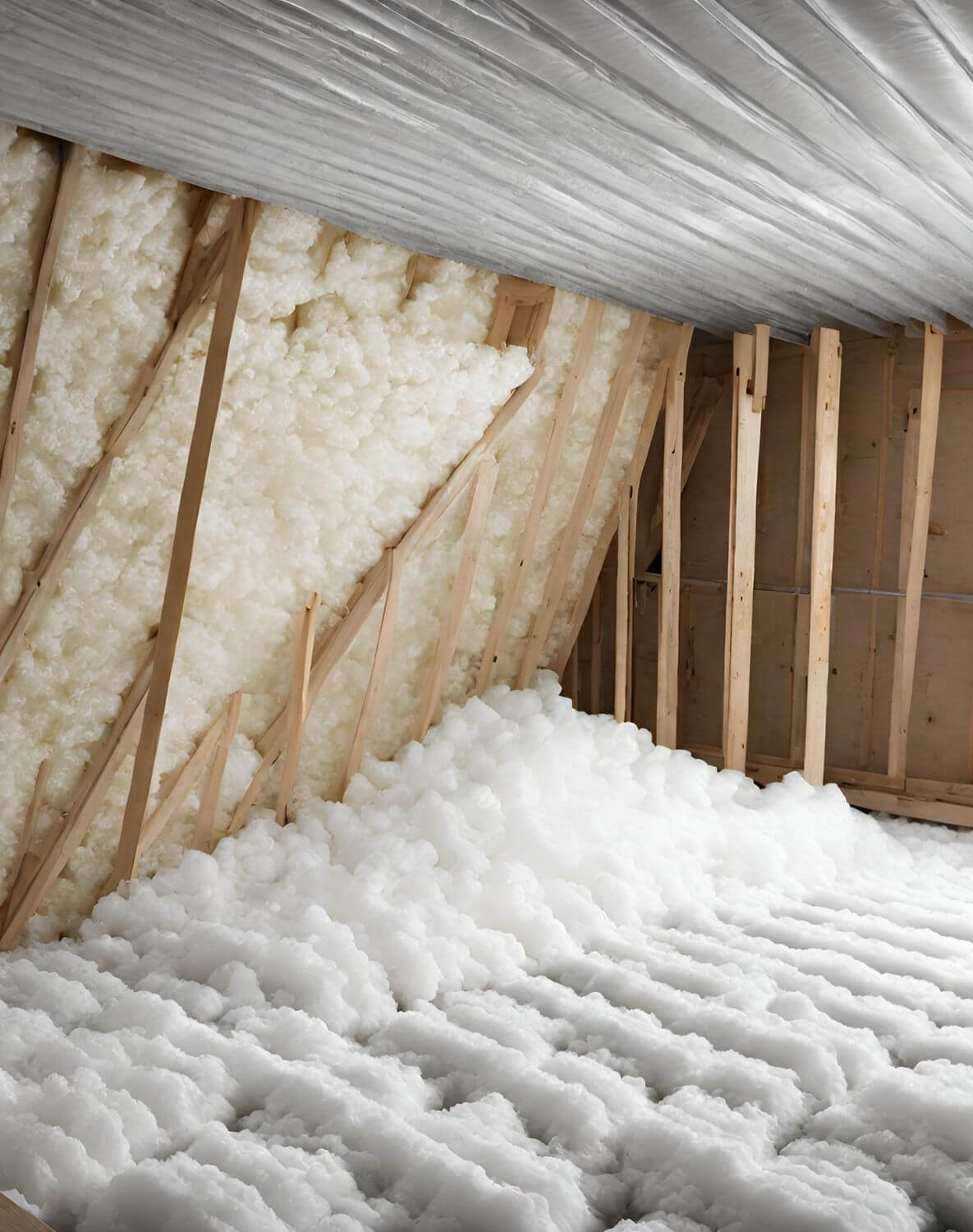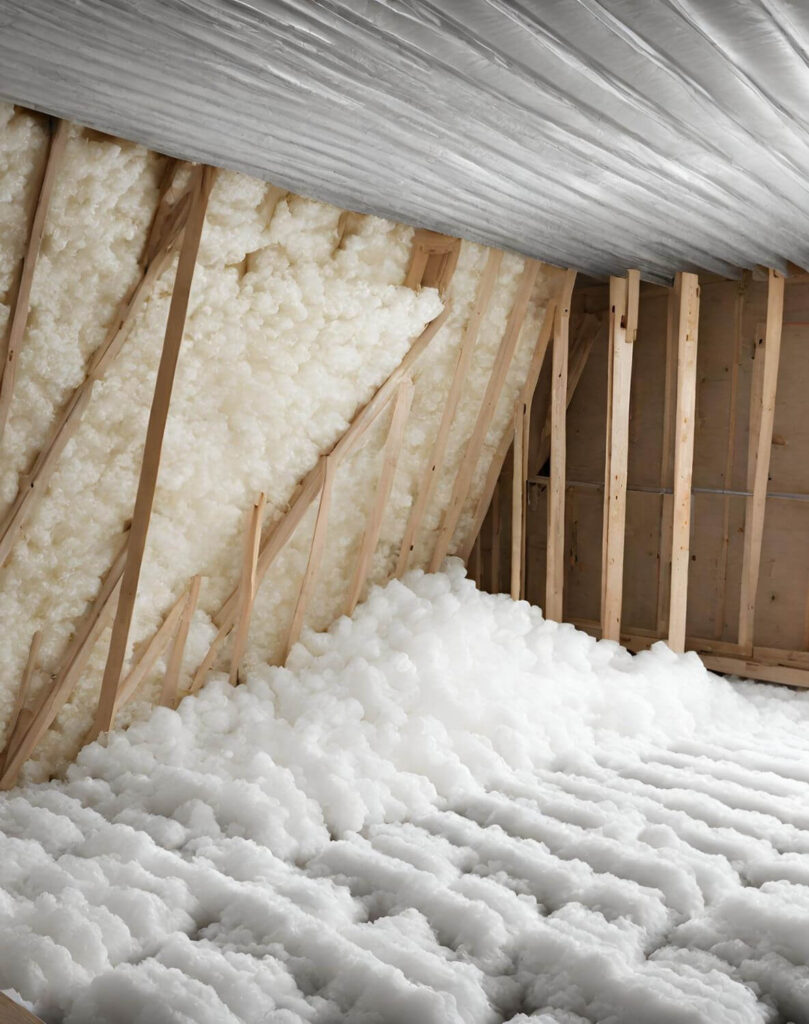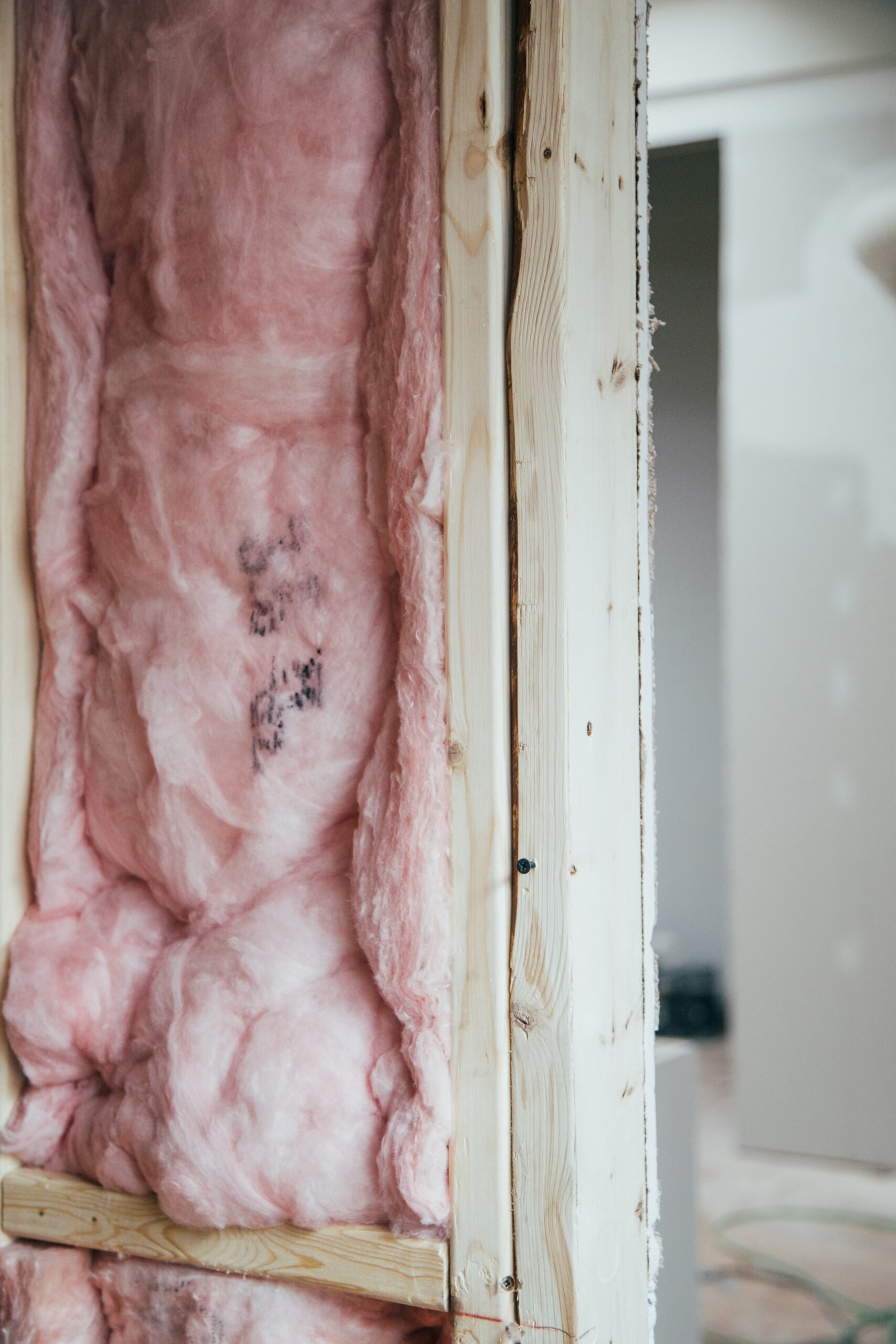
Have you ever wondered if it’s possible to add more loft insulation without removing the existing one? Well, the answer is yes! In this article, we will explore the feasibility and benefits of putting loft insulation over existing insulation. Whether you’re looking to improve the energy efficiency of your home or simply add an extra layer of insulation, we’ve got you covered. So, let’s dive into the world of loft insulation and discover how you can make your home more comfortable and energy-efficient.
Benefits of Adding Additional Loft Insulation
Improved Energy Efficiency
Adding additional loft insulation can greatly improve the energy efficiency of your home. By increasing the thickness of the insulation layer, you can reduce heat loss through the roof, keeping your home warm in the winter and cool in the summer. This helps to lower your heating and cooling costs, saving you money on your energy bills and reducing your overall carbon footprint.
Better Comfort and Temperature Regulation
Another major benefit of adding extra loft insulation is improved comfort and temperature regulation within your home. With better insulation, you can maintain more consistent temperatures throughout your living space, eliminating cold spots and ensuring a cozy and comfortable environment year-round. This can significantly enhance your overall quality of life and make your home more enjoyable to live in.
Reduction in Noise Pollution
In addition to energy efficiency and comfort, adding additional loft insulation can also help reduce noise pollution from the outside. Insulation acts as a barrier, absorbing and reducing sound transmission from external sources such as traffic, neighbors, or street noise. This can make your home a quieter and more peaceful place, allowing you to enjoy a more serene living environment.
Types of Loft Insulation
Blanket Insulation
Blanket insulation, also known as roll or batt insulation, is one of the most common types of loft insulation available. It is made from flexible materials such as mineral wool or fiberglass, and comes in pre-cut rolls that can be easily installed between the roof joists or over existing insulation. Blanket insulation is affordable, easy to handle, and provides efficient thermal and acoustic insulation.
Spray Foam Insulation
Spray foam insulation is a more modern and versatile option for loft insulation. It is applied as a liquid that expands and hardens into a solid foam, filling gaps and voids to create a seamless and airtight thermal barrier. Spray foam insulation provides excellent insulation performance and also acts as a barrier against moisture and air infiltration. This type of insulation requires professional installation due to the specialized equipment and techniques involved.
Blown-in Insulation
Blown-in insulation, also known as loose-fill insulation, is another option for adding insulation to your loft. It consists of loose fibers or particles, such as cellulose or mineral wool, that are blown into the loft space using specialized equipment. The loose-fill insulation fills all the nooks and crannies, providing efficient insulation and improving energy efficiency. Blown-in insulation is especially useful for irregularly shaped or hard-to-reach areas.

Considerations Before Adding Additional Insulation
Assessing Existing Insulation
Before adding additional loft insulation, it is essential to assess the condition of your existing insulation. Inspect the thickness, integrity, and moisture levels of the current insulation to determine if it needs to be replaced or supplemented. It is important to ensure that any existing insulation is in good condition and free from mold or other damage before proceeding with additional insulation installation.
Understanding Building Regulations
It is crucial to familiarize yourself with local building regulations and requirements regarding loft insulation. Different regions may have specific guidelines on the type and thickness of insulation needed for compliance. Ensure that you follow these regulations and obtain any necessary permits or approvals before adding additional insulation to your loft.
Identifying Potential Issues
Before adding extra insulation, it is essential to identify any potential issues in your loft space. Look for signs of leaks, condensation, or dampness that may affect the performance of the insulation or cause damage over time. If any issues are identified, it is important to address them before proceeding with insulation installation to ensure the longevity and effectiveness of the insulation.
Methods of Installing Loft Insulation Over Existing Insulation
Layering Blanket Insulation
Layering additional blanket insulation over existing insulation is a straightforward and cost-effective method. Simply unroll the new insulation rolls between the roof joists, ensuring a snug fit and complete coverage. Make sure to overlap the insulation seams to minimize heat loss and create a continuous thermal barrier. This method is suitable for attic spaces with sufficient headroom and easy access.
Using Blown-in Insulation
Blown-in insulation is an excellent option for adding insulation to hard-to-reach or irregularly shaped areas in your loft. With the help of a professional installer, loose-fill insulation can be evenly distributed throughout the loft space, filling gaps and voids. The blown-in insulation creates a consistent layer, improving overall insulation performance and energy efficiency.
Spray Foam Insulation Application
Applying spray foam insulation requires professional expertise, as it involves specialized equipment and proper installation techniques. Professional installers spray the foam insulation directly onto the loft surface, filling gaps and expanding to create an airtight seal. Spray foam insulation can be used to cover existing insulation or applied directly to the loft surface for maximum efficiency and effectiveness.

Preparation Steps
Cleaning and Clearing the Loft Space
Before installing additional insulation, it is crucial to clean and clear the loft space. Remove any debris, old insulation, or unwanted items to ensure a clean and clutter-free environment. This allows for better access and ensures that the insulation is installed properly. It is also a good opportunity to inspect the roof and loft structure for any signs of damage or deterioration.
Ensuring Proper Ventilation
Proper ventilation is essential to maintain a healthy and moisture-free loft space. Before adding insulation, ensure that your loft has adequate ventilation to prevent condensation and mold growth. Install roof vents, soffit vents, or other ventilation systems as needed to promote air circulation and prevent moisture buildup. Proper ventilation helps to preserve the integrity of the insulation and prevents potential damage.
Sealing Air Leaks
Before installing additional insulation, it is important to seal any air leaks in the loft space. Check for gaps around windows, doors, electrical outlets, and other openings, and apply weatherstripping or caulking to prevent air infiltration. Sealing air leaks improves the overall performance of the insulation by minimizing heat loss and maintaining a consistent temperature within your home.
Safety Precautions
Working with Protective Gear
When adding loft insulation, it is important to prioritize safety. Wear appropriate protective gear, including gloves, safety goggles, and a dust mask, to protect yourself from potential irritants or allergens. Insulation materials can be irritating to the skin and respiratory system, so taking precautions will help ensure a safe and healthy installation process.
Adhering to Safety Guidelines
Follow safety guidelines and instructions provided by the insulation manufacturer and professional installers. Be cautious when working in a confined space, such as a loft, and use ladders or scaffolding with proper safety precautions. Avoid overloading the loft with excess weight and ensure that the loft floor is structurally sound to support the additional insulation.
Avoiding Electrical Hazards
When installing insulation in the loft, be aware of any electrical hazards that may be present. Identify and mark electrical cables or junction boxes to avoid accidentally cutting or damaging them. If you are unsure about electrical safety, consult a professional electrician to ensure that all electrical components in your loft are properly handled and protected during insulation installation.
When Not to Add Additional Insulation
Deteriorated Existing Insulation
If your existing loft insulation is deteriorated, damaged, or showing signs of mold or moisture issues, it is not recommended to add additional insulation on top. Address the underlying issues first by removing the deteriorated insulation and resolving any moisture or mold problems. Installing new insulation over damaged or compromised insulation will not provide optimal performance and may exacerbate existing issues.
Moisture or Mold Issues
If your loft space has ongoing moisture or mold issues, it is important to address these problems before adding additional insulation. Moisture can be detrimental to insulation performance and can lead to further damage or mold growth. Ensure that the loft space is properly ventilated and that any existing moisture problems are resolved to prevent future issues.
Structural Limitations
Before adding extra insulation, consider the structural limitations of your loft space. Adding too much insulation without proper support or exceeding the weight capacity of the loft floor can compromise the structural integrity of your home. If you are unsure about the load-bearing capacity of your loft or have concerns about structural limitations, consult a professional to assess the suitability of adding additional insulation.
Consultation and Professional Services
Seeking Expert Advice
If you are unsure about the best insulation options or installation methods for your loft, it is advisable to seek expert advice. Consult with professionals in the insulation industry or reputable insulation companies who can assess your loft space and provide personalized recommendations based on your specific needs. Their expertise can ensure that you choose the right insulation materials and installation techniques for optimal results.
Hiring Professional Installers
Installing loft insulation can be a complex and time-consuming task. If you are not confident in your DIY abilities or prefer to leave the job to professionals, consider hiring experienced installers. Professional insulation contractors have the necessary skills, equipment, and knowledge to ensure a proper and efficient installation. They can handle the entire insulation process, from removal to replacement or upgrading, saving you time and ensuring quality results.
Considering Energy Assessments
Before adding additional insulation, consider scheduling an energy assessment for your home. Energy assessments provide a comprehensive evaluation of your home’s energy efficiency, identifying areas of improvement and recommending insulation upgrades. Professional energy assessors can provide valuable insights and recommendations tailored to your home’s specific needs, helping you make informed decisions about adding loft insulation.
Insulation Removal and Replacement Options
Complete Insulation Removal
In some cases, it may be necessary to completely remove the existing insulation before adding new insulation. This is especially true if the current insulation is in poor condition, contains asbestos, or is not providing adequate insulation. Complete insulation removal allows for a fresh start, ensuring that the new insulation is installed on a clean and suitable substrate, maximizing its effectiveness.
Partial Insulation Removal
If the existing insulation is in relatively good condition, it may be possible to remove only certain sections or layers of insulation. Partial insulation removal can be useful when upgrading or supplementing specific areas of the loft space, such as addressing thermal bridging or installing insulation in areas that were previously uninsulated. Assess the condition and performance of the existing insulation to determine if partial removal is necessary or beneficial.
Upgrading Existing Insulation
If the existing insulation is in good condition and meets current building regulations, upgrading the insulation may be a viable option. This involves adding additional insulation on top of the existing insulation to enhance its performance. Upgrading existing insulation can be a cost-effective solution, as it saves the time and effort of removing the old insulation. However, ensure that the combined insulation thickness meets the recommended requirements for optimal efficiency.
Conclusion
Maximizing Insulation Efficiency
Adding additional loft insulation offers numerous benefits, including improved energy efficiency, better comfort, and temperature regulation, as well as reduced noise pollution. By choosing the right type of insulation and installation method, you can maximize the insulation’s efficiency and create a more sustainable and energy-efficient home.
Improving Home Comfort
Extra loft insulation helps create a cozy and comfortable living environment by maintaining consistent temperatures and eliminating cold spots. The added insulation prevents heat loss during winter and keeps your home cool during summer, ensuring year-round comfort for you and your family.
Sustainable Energy Usage
By increasing the thermal performance of your home through additional loft insulation, you reduce your reliance on artificial heating and cooling systems. This not only saves you money on energy bills but also contributes to a more sustainable future by reducing carbon emissions.
Consider the condition of your existing insulation, local building regulations, and any potential issues before adding additional insulation. Follow proper preparation steps, adhere to safety precautions, and address any underlying problems. Consultation and professional services can provide valuable insights and ensure a successful insulation installation. Whether you opt for complete removal, partial removal, or upgrading, prioritize maximizing insulation efficiency, improving home comfort, and promoting sustainable energy usage.





